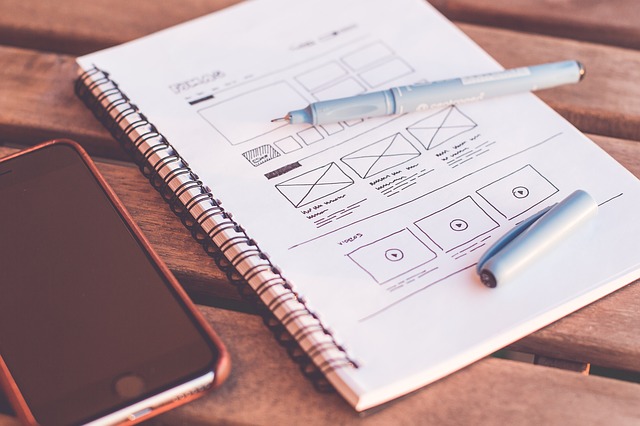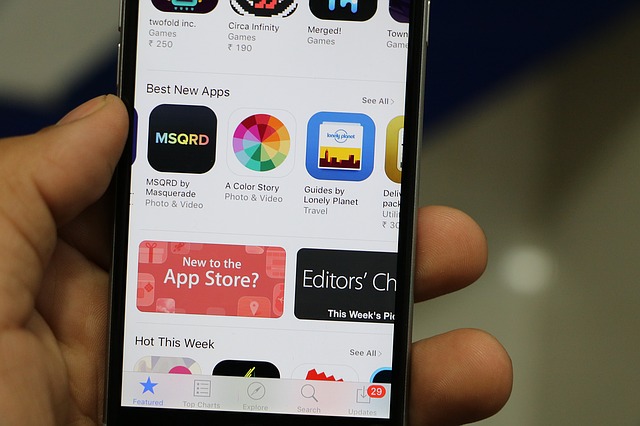Many companies have embraced building apps to disseminate information and build positive regard with their customers, yet many others still believe that it’s a confusing and mystifying process in which to be involved. However, nothing is further from the truth. In fact, building a successful app is as easy as following the simplified process below. Keep reading to find out more.

Conception
Before you can build an app, you need to have some idea of why it is a valid activity. What this means is that you need a plan for the app itself as well as the problem it will solve, or goal it will achieve for your company. You also need to ensure that whatever you come up with matches in well with your user demographic.
Some companies choose to create apps that provide a service for their customers. These may be in the form of stock checking in their stores like the IKEA app does, as well as providing information on specific subjects like speed camera apps, and usage checkers, or apps that allow users to create something such as photo manipulations, memes, or gifs.
Other companies choose to create apps where the emphasis is on interactivity. The Tonight Shows’ app is all about providing a platform for viewers to interact and contribute to the show and its surrounding social media of a personal level, Something that can improve engagement and regard for their particular brand.
Still, others apps like the uber famous Candy Crush game are all about providing entertainment for their users, and while their monetization model is based on in-app purchases, other companies can still use this gaming model to significant effect.
Candy Crush is a fantastic example of a in app purchase model.
Of course, there are other factors to consider at the conception of your app as well including the fact that using this form of marketing can reduce your costs, and it is a highly effective way to raise brand awareness in the digital age.
Research and planning

Once you have thought through the app conception phase, then it’s time to start the research and planning. In particular, it’s essential to look at your direct competitors and see what they are offering in term of their apps. You will, of course, want something that holds up top the competition but is also original enough to supersede it. What this means is that you need to think of a way that the design of your app and the content and features it offers will grab the attention of your target demographic and appeal to a specific audience.
Take note not only of your competitor’s designs, concepts, and wireframes but also of the method of monetization they are using and whether this can be successfully applied to your market.
For instance, some app creators will want to charge for app downloads and this is where their income stream will be created, while others choose the somewhat controversial in-app purchase model. However, for most companies that are using an app as part of the marketing strategy, it pays to offer them for free because they add value by increasing interaction with the brand in question.
Design
After you have decided on your concept and done some research, it’s time to get down to the nitty-gritty of designing the app itself. Usually, this is a task that is done by specialist app developers, although that doesn’t mean that the client company has no role in the stage at all.
In fact, there are several important things that the client company must do and provide if the app being developed it to be a success. The first is that they must ensure the links, web pages, images, info, and feeds that the app builders are provided with are working and accurate. After all, the developers will not be able to build a working app if they do not have this vital information.
Next, it is also vital that the client company works with the app builders to create a successful schematic design, also known as the wireframe for the app. A decent wireframe is vital because it acts as an initial flowchart for how the app will work. Therefore early issues can be identified and resolved before the app is even build to ensure that it functions as effectively as possible.

The client company also need to be involved in the creation of the user interface (UI) for the app users to use. A successful UI is something that visually appeals to the demographic that has been identified for the app and is also pleasing and easy to use. This is where the client research on the user demographics will come in most helpful.
Testing
Once the app design has been roughed out, and the build has begun, the primary focus shifts to quality assurance or QA testing. To get the best results here, many companies use specialists that have access to a sizeable crowdsourced testing base as their partners in this sort of endeavor.
The aim of QA testing is two-fold. One reason it is used is to identify and work out any bugs in the app before it gets released, something that is usually done with exploratory testing. The other reason QA testing is crucial to app development is that it is used to check that the core process flows in the app are working in the right way for users, something that is known as test case execution.
Of course, with much app development, this process does not happen in a separate stage, but an agile testing approach is used. What this means is a more formative development process is used, where apps are tested at each step, and then tweaked for better performance all the way through the build process.
Release
The penultimate stage is that of release when the app is delivered to the app store and can be downloaded by users. Of course, most businesses release a beta version before the financial one goes live to eliminate any significant disasters and put people off using their app in the long term.

Also, it’s important to note that just like any other service your company provides to its user’s apps do need to be marketed too. Many businesses do this by adding a link on their website that takes the user directly to the app store and starts a download. Some companies even include reference to their app in their TV, radio, magazine, and social media campaigns.
After all, your goal is to raise brand visibility and to provide a service that creates positive regard for your company. Therefore, having an app available; that no one knows about won’t do much good.
Also, don’t forget that it’s entirely viable to do a soft release for your app where you allow it to be bought in a single geographical location. This can work in a similar fashion to a beta test, and give you available feedback on what is working and what needs to be changed before you go worldwide.
Customer feedback
Lastly, if you are designing an app for customers, then it is essential to remember to listen to what they have to say about it. In fact, this applies to launching apps that are pay per download, or that run on in-app purchases as they will need to keep customers on-side just as much as a free service app will.
If possible, include your contact information and even a customer feedback section within the app, so people can make suggestions and comment on things that aren’t working well for them. Of course, this is also an excellent opportunity to include the chance for people to review your app, something that can get it a lot more coverage in the relevant app store and so downloaded by even more customers and users.